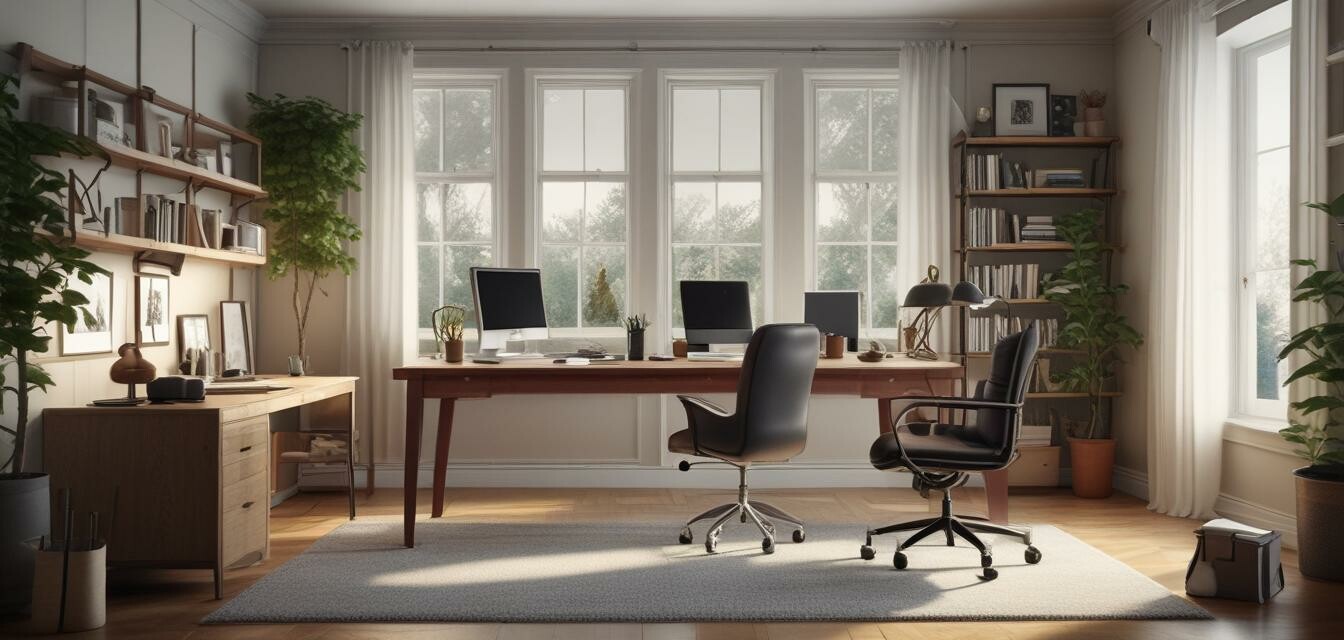
Designing an Office for Increased Collaboration
Key Takeaways
- Focus on open and flexible layouts to facilitate teamwork.
- Incorporate collaborative tools and technology.
- Ensure comfort and ergonomics in furniture selection.
- Use color schemes that inspire creativity and ease communication.
- Create designated areas for different types of work.
As more people embrace remote work, establishing an efficient and collaborative office environment at home has become essential. A well-designed home office not only boosts productivity but also fosters communication among team members. In this article, we will explore practical tips for designing a home office space that encourages collaboration and enhances teamwork.
Understanding the importance of collaboration in a home office
Collaboration is vital in a home office, especially when working with remote teams. An environment that encourages open communication inspires creativity, problem-solving, and project success. To achieve effective collaboration, consider the following key aspects:
- Flexible layout: A well-organized space allows for easy movement and interaction
- Technology integration: Use tools that facilitate real-time communication
- Comfortable furniture: Ergonomic chairs and desks are essential for long work hours
Creating an inviting and functional office layout
Setting up your home office requires careful consideration of the layout. Here are several tips for creating an environment conducive to collaboration:
1. Choose an open layout
Design your office using an open layout that encourages team members to interact regularly. Here’s a simple layout template:
| Area | Purpose |
|---|---|
| Central Workspace | Desk and chairs for team members to gather and discuss ideas |
| Meeting Space | A small table and chairs for more focused discussions |
| Break Area | A cozy corner for informal conversations and brainstorming sessions |
2. Incorporate collaborative tools
Equipping your home office with the right technology is essential for collaboration. Some tools to consider include:
- Video conferencing software for meetings
- Project management tools to keep track of ongoing tasks
- Shared digital whiteboards for brainstorming sessions
3. Personalize the workspace
Encouraging personalization in your home office can enhance team morale. Allow team members to decorate their spaces creatively. Consider including:
- Artwork and photographs that inspire
- Plants for a more vibrant environment
- Colorful stationery that adds a personal touch
Ergonomics and comfort: Key to productivity
Ensuring that your home office is comfortable will minimize distractions caused by physical discomfort. High-quality ergonomic furniture can dramatically improve productivity. Here are some considerations:
| Furniture | Benefits |
|---|---|
| Ergonomic Chair | Supports posture and reduces the likelihood of back pain |
| Adjustable Desk | Allows for sitting or standing, reducing fatigue |
| Cushioned Mat | Increases comfort when standing or moving around |
Color schemes and decor for inspiration
The colors and decor you choose for your home office can influence mood and productivity. Here are a few suggestions:
- Blue: Promotes focus and calmness
- Green: Inspires creativity and reduces stress
- Yellow: Adds cheerfulness and energy
Designing areas for different work types
Your home office should cater to various work types, including collaborative discussions, focused work sessions, and relaxation. Create designated areas for:
- Team discussions
- Independent work
- Relaxation breaks
Additional resources for home office design
For more information on creating an effective home office, check out our guides on:
- Buying guides for office furniture
- Inspiration on selecting the right desk
- Additional tips for home office design
Pros
- Increased productivity and efficiency
- Stronger team bonds and communication
- Greater creativity from teamwork
Cons
- Potential distractions in a home environment
- Difficulty in separating work and personal life
- Need for reliable technology
Final thought
Designing a collaborative office space at home is essential for maximizing productivity while working remotely. By focusing on layout, technology, comfort, and decor, you can create an inspiring environment that enhances teamwork. Follow these guidelines, and you’ll foster a culture of collaboration that meets the needs of your remote team.